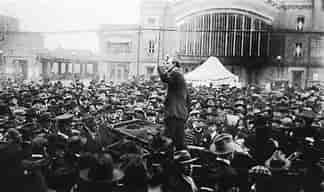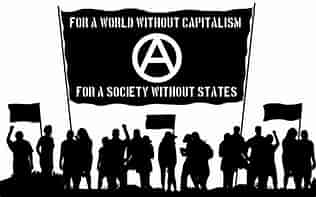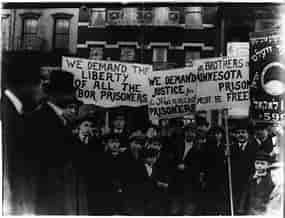The Radical History of Anarchism
Introduction
Anarchism often conjures images of chaos and disorder, but at its core, it represents a profound desire for freedom and equality. This political philosophy has evolved significantly over the years, shaping revolutions and social movements across the globe. From its early roots in the Enlightenment to its role in modern activism, anarchism challenges traditional notions of authority and governance. So, what is the radical history of anarchism? How has it transformed from a revolutionary ideology into a vibrant social movement? Let’s embark on this journey through time to uncover the layers of anarchism’s rich tapestry.
What is Anarchism?
Defining Anarchism
Anarchism is a political philosophy that advocates for a society without hierarchical structures or coercive authority. It seeks to promote individual freedom, voluntary cooperation, and mutual aid among people. Contrary to popular belief, anarchism does not equate to chaos; rather, it envisions a world where individuals can self-govern and organize without oppressive systems.

Key Principles of Anarchism
At the heart of anarchist thought are several key principles:
- Anti-authoritarianism: A rejection of all forms of unjust authority.
- Voluntary association: The belief that individuals should freely choose their associations and relationships.
- Mutual aid: The idea that cooperation and support among individuals create stronger communities.
- Decentralization: A preference for local decision-making rather than centralized power structures.
Historical Roots of Anarchism
Early Influences
Anarchist ideas can be traced back to ancient philosophies that questioned authority and promoted individual autonomy. Thinkers like Socrates and Epicurus laid the groundwork for later critiques of power. However, modern anarchism began to take shape during the Enlightenment when philosophers such as Jean-Jacques Rousseau and William Godwin began advocating for social equality and individual rights.
The Birth of Modern Anarchism
The term “anarchism” was first used in the mid-19th century by Pierre-Joseph Proudhon, who famously declared that “property is theft.” Proudhon’s ideas about mutualism—where individuals exchange goods and services based on mutual benefit—challenged capitalist norms and inspired future anarchist movements.
The Rise of Classical Anarchism
The First International
In 1864, the First International was formed to unite various socialist groups, including anarchists. This organization became a platform for discussing revolutionary tactics and strategies. However, tensions arose between Marxists and anarchists over differing views on authority and organization. This schism ultimately led to the expulsion of anarchists from the International in 1872.
Key Figures in Classical Anarchism
Several influential figures emerged during this period:
- Mikhail Bakunin: A prominent Russian anarchist who emphasized collective action and anti-authoritarianism.
- Emma Goldman: An American anarchist known for her advocacy of free speech, women’s rights, and labor rights.
- Peter Kropotkin: A Russian theorist who argued for anarcho-communism, promoting the idea that societies could function through cooperation rather than competition.
Anarchism and Revolution

The Paris Commune (1871)
One of the most significant events in anarchist history was the Paris Commune—a radical socialist government that briefly ruled Paris. Anarchists played a vital role in its establishment, advocating for direct democracy and workers’ control. Although it was ultimately crushed by the French government, the Commune inspired future generations of revolutionaries.
The Russian Revolution (1917)
The Russian Revolution saw anarchists actively participating alongside Bolsheviks in overthrowing the Tsarist regime. However, once the Bolsheviks consolidated power, they suppressed anarchist movements, leading to conflicts such as the Kronstadt Rebellion in 1921. This betrayal left many disillusioned with Marxist-Leninist strategies.
Anarchism During World Wars
World War I Responses
The outbreak of World War I forced anarchists to confront their beliefs about nationalism and militarism. While some supported anti-war efforts, others believed that revolution could emerge from wartime struggles. This period highlighted divisions within the movement regarding participation in national conflicts.
World War II Resistance
During World War II, many anarchists resisted fascist regimes across Europe. In Spain, anarcho-syndicalists fought against Franco’s forces during the Spanish Civil War (1936–1939). They established collectivized farms and worker-run industries but ultimately faced suppression from both fascists and Stalinists.
Post-War Anarchism: Revival and New Movements
The Decline After WWII
By the end of World War II, the anarchist movement had been severely weakened due to repression from fascist regimes and internal conflicts within leftist groups. Many activists turned towards Marxist-Leninist ideologies as they sought effective paths toward social change.
The 1960s Counterculture Movement
The 1960s saw a resurgence of interest in anarchist ideas as part of broader countercultural movements. Activists opposed war, civil rights violations, and environmental destruction began drawing inspiration from historical anarchist principles. This era also witnessed an emergence of anarcha-feminism—a branch that integrates feminist perspectives into anarchist thought.
Anarcho-Capitalism vs. Social Anarchism
Understanding Different Schools of Thought
Anarchism is not monolithic; it encompasses various schools of thought that differ significantly in their approaches:
- Anarcho-capitalism advocates for free-market capitalism without state intervention.
- Social anarchism, on the other hand, emphasizes collective ownership and egalitarian principles.
Key Differences Explained
While both schools reject centralized authority, they diverge on economic systems:
- Anarcho-capitalists believe that free markets can exist without state interference.
- Social anarchists argue that capitalism inherently creates inequality and advocate for communal ownership instead.
Contemporary Anarchist Movements

Modern-Day Activism
Today’s anarchists continue to engage in various social movements—environmental activism, anti-globalization protests, labor rights campaigns—while emphasizing direct action over electoral politics. They often collaborate with other leftist groups but maintain their distinct identity rooted in anti-authoritarian principles.
Technology’s Role in Modern Anarchism
The rise of digital communication has transformed how contemporary anarchists organize. Online platforms facilitate information sharing, mobilization efforts, and community-building among activists worldwide. This interconnectedness allows for rapid responses to injustices while fostering solidarity across borders.
Challenges Facing Modern Anarchists
Misconceptions About Anarchism
Despite its rich history and contributions to social justice movements, many misconceptions about anarchism persist today. Often viewed as synonymous with chaos or violence rather than a legitimate political philosophy advocating for freedom without oppression—these misunderstandings hinder broader acceptance.
Internal Divisions Within Movements
Modern-day anarchists also face challenges stemming from internal divisions regarding strategy—some prioritize direct action while others focus on community-building efforts through mutual aid networks or cooperative enterprises . These differing approaches can lead to tensions within groups seeking common goals yet disagreeing on tactics employed.
The Future of Anarchism: Potential Paths Forward
Embracing Intersectionality
As society becomes increasingly aware of issues related to race, gender, sexuality, class, environmental sustainability, etc., there is an opportunity for contemporary anarchists to embrace intersectionality—recognizing how various forms oppression intersect. By doing so they can build coalitions across diverse communities working toward shared goals.
Building Resilient Communities
The future success of anarchistic ideals may lie in fostering resilient communities capable responding effectively crises while promoting self-governance. Initiatives like food cooperatives, housing collectives, or worker-owned businesses exemplify practical applications these principles.
Conclusion: A Legacy Worth Exploring
The radical history of anarchism reveals a complex narrative filled with triumphs, struggles, contradictions, resilience. From revolutionary fervor during tumultuous times shaping societies globally, it continues inspire activists today who seek challenge oppressive systems. As we reflect upon this legacy, let us remain open-minded about possibilities create more equitable just world—one where freedom truly reigns supreme without hierarchies stifling potential every individual.
Meta Description
Explore the radical history of anarchism, tracing its evolution from revolutionary fervor to modern-day social movements. Understand key concepts, influential thinkers, and ongoing impacts.
FAQs
Contemporary applications include mutual aid networks , cooperative businesses , grassroots organizing efforts addressing issues such as climate change , racial justice , labor rights .
What is the main goal of anarchism?
The primary goal of anarchism is to create a society free from hierarchies and coercive authority while promoting individual freedom through voluntary cooperation.
Who were some key figures in early anarchist thought?
Key figures include Pierre-Joseph Proudhon (mutualism), Mikhail Bakunin (collectivist anarchism), Emma Goldman (anarcha-feminism), and Peter Kropotkin (anarcho-communism).
How did World Wars impact the anarchist movement?
Both World Wars challenged traditional views within the movement; many activists had differing opinions on participation while facing repression from authoritarian regimes during these conflicts.
What distinguishes social anarchism from other forms?
Social anarchism emphasizes collective ownership over private property whereas other forms like anarcho-capitalism advocate for free-market capitalism without state intervention.
What are some modern applications of anarchistic principles?
Contemporary applications include mutual aid networks, cooperative businesses, grassroots organizing efforts addressing issues such as climate change, racial justice, labor rights.


